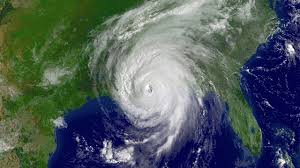Blogger: Lee M. Epstein

Many business owners and most homeowners purchase flood insurance through the National Flood Insurance Program (“NFIP”). Unfortunately, most homeowners affected by Hurricane’s Harvey and Irma and the associated flooding won’t have insurance. For example, only 17% of those suffering flood damage from Harvey were insured. The numbers in Florida are better but nevertheless well-under 50% of those suffering a flood loss will be insured.
Even those with flood insurance may still be up the proverbial creek without a paddle. The Federal Emergency Management Agency (“FEMA”), the agency that manages the NFIP, publishes statistics that reveal systematic underpayments of flood insurance claims.
According to FEMA, in the aftermath of Superstorm Sandy, nearly 144,000 policyholders filed flood insurance claims. When numerous problems, including fraud, were uncovered in connection with the adjustment of those claims, FEMA offered those policyholders an opportunity to have their claims re-reviewed. Over 19,000 Sandy claimants took advantage of that opportunity. To date, FEMA has closed 16,744 of those claims. Approximately 83.7% of those closed claims have resulted in additional payments totaling $227,060,819, or approximately $14,000 for each underpaid Sandy claimant. Thus, FEMA openly acknowledges that it vastly underpaid policyholders. Based on that large sample, if every one of the 144,000 Sandy claimants had sought a re-review, the underpayments would have exceeded $2,000,000,000. That is extraordinary.
But there is more. If a Sandy claimant was not satisfied with the FEMA re-review, they were entitled to a Third-Party Neutral Review by, for example, a retired judge. Approximately 2,277 Sandy claimants have requested a Third-Party Neutral Review. To date, 1,087 Third-Party Neutral Reviews have been completed. Total additional payments of $19,668,316 have been made based on those Third-Party Neutral Reviews or approximately $18,000 per claim. Thus, those Sandy claimants who pursued both a re-review and a Third-Party Neutral Review of their claim received, on average, an additional $32,000 over the amount FEMA originally offered to pay on their claim.
And there is still more. Sandy claimants that pursued Third-Party Neutral Reviews with the assistance of competent legal counsel and other professionals fared even better.
Those currently suffering flood losses throughout the country can learn several valuable lessons from the experience after Sandy.
First, flood insurance policyholders should anticipate and be prepared for FEMA to initially undervalue their claim.
Second, flood insurance policyholders should not hesitate in asking FEMA to reevaluate its initial of adjustment of flood insurance claims.
Third, in order to enhance the recovery on any flood insurance claim, policyholders should seek the advice and counsel of competent professionals.
Fourth and, perhaps, most importantly, don’t give up and don’t give in.
For more information, please contact Lee Epstein, Chair of the Insurance Counseling and Recovery Department at Flaster Greenberg PC.




